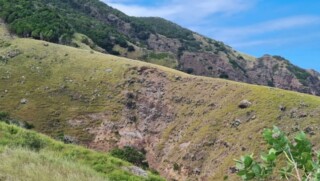Bonaire’s Coral Reefs Face Growing Threats from Bleaching Events
KRALENDIJK – Coral reefs in Bonaire’s National Marine Park (BNMP) are increasingly under pressure as mass coral bleaching events become more frequent and severe. This becomes clear from Stinapa’s most recent Coral Bleaching Report
From 2016 to 2023, surveys conducted in the marine park revealed signs of thermal stress in more than 5% of coral colonies annually, with the exception of 2021 when bleaching levels were minimal. However, 2023 marked the most alarming year yet, as 84% of surveyed coral colonies displayed some degree of bleaching. This unprecedented stress led to follow-up surveys in early 2024, which found that 19% of coral colonies had suffered partial or complete mortality due to bleaching.
Notably, some coral species, such as Yellow Pencil Coral and Great Star Coral, appeared to be more resistant to thermal stress compared to others. Additionally, deeper reefs (25m and beyond) experienced greater bleaching than shallow reefs, prompting expanded monitoring to depths of 35m in 2023.
The situation underscores the urgent need for action. While addressing global climate change is a formidable challenge, Bonaire’s focus remains on local conservation efforts. The island’s slogan, “Nos ta biba di naturalesa” (nature is our livelihood), highlights its commitment to preserving its natural heritage.
Ongoing initiatives by STINAPA Bonaire, in collaboration with partners like Florida State University and funded by the Lenfest Ocean Program, aim to identify vulnerable and resilient reef areas, improve monitoring, and develop strategies to mitigate climate change impacts. These efforts are vital to ensuring the long-term health and sustainability of Bonaire’s coral reefs.
Local actions
The community’s proactive approach serves as a reminder that local actions can play a critical role in protecting global treasures like the coral reefs of Bonaire.











